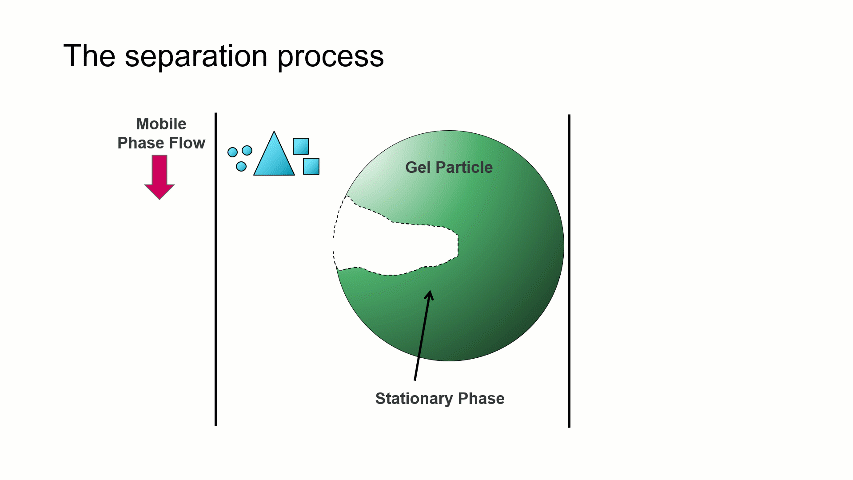Basic components of a GPC/SEC system
Multiple times this year I’ve found myself describing the analytical technique of GPC/SEC and explaining its place, (and OMNISEC’s!) in the expansive continuum of analytical instruments. I recently described how GPC/SEC differs from HPLC and UHPLC, so now seems like a reasonable time to take another step back and discuss the basic components of a GPC/SEC system.
I have covered some of this material (and more!) in my video Introduction to GPC/SEC in 30 minutes. This post will go through each component of a GPC/SEC instrument and highlight its importance in the context of the entire system.
Front End
I’ll start with a set of items generally lumped into what is called the “front end” of the instrument. The front end is responsible for delivering and moving the mobile phase and introducing the sample into the flow path. In many situations, people trying to create a GPC/SEC system can use the front end of an existing HPLC system, since the hardware is similar and can perform the required functions.

Solvent Reservoir
The solvent reservoir contains the supply of the mobile phase, which is required to move the sample through the column set and detectors. Ensuring your mobile phase is clean and prepared properly goes a long way toward keeping your system healthy!
Degasser
The degasser is not a required component of a GPC/SEC system, but it is definitely nice to have! The degasser removes air from the solvent to help stabilize the detector baselines. Not only does this shorten the time required to get your system ready for analyses, but quieter baselines also improve the quality of your data.
Pump
The mobile phase doesn’t move by itself – that’s the job of the pump! For GPC/SEC, an isocratic pump is all that’s required, since the goal is to keep the system conditions, including flow rate, as consistent as possible.
Injection Valve / Autosampler
The introduction of a sample into the flow path is vital to making a GPC/SEC measurement. This can be done through a manual injector or an autosampler. Both injection mechanisms have the ability to send a trigger signal that alerts the software a run has initialized and to begin collecting data. An autosampler allows you to continuously run samples while not in front of the instrument, such as overnight, maximizing instrument use. It also can provide temperature control while the samples are awaiting injection.
Column Set
The site of the actual size exclusion chromatography in a GPC/SEC instrument is the column set. The column set separates the macromolecules based on their molecular size, with larger molecules eluting first and smaller molecules eluting later. The column set contains particles with pores specifically sized to allow smaller molecules to diffuse in and out more easily, thus increasing their path length through the column set and eluting later. This process is (cartoonishly) depicted below, and written about in more detail here.

Detectors
To make a successful GPC/SEC measurement, you need at least a single concentration detector. The most common concentration detector is a refractive index (RI) detector. Additional detectors, such as light scattering detectors, a viscometer detector, UV-Vis PDA detector, and others can be added to provide complete characterization of your sample.

Waste Bottles
All of that mobile phase has to go somewhere, and the final destination of all samples and mobile phase used on a GPC/SEC instrument is a waste bottle at the end of the flow path. Additionally, some autosampler-based systems may have a separate drain bottle for needle washes and leak management.
Software
A critical component that ties all aspects of a GPC/SEC analysis together is the software, usually used to control the instrument, collect raw data, and calculate results – sometimes all at the same time! An overview of the OMNISEC software, used to provide all three aforementioned functions, is shown below.
Final thoughts
I hope that this overview of the components of a GPC/SEC system helps you better understand the purpose and function of each, and the instrument as a whole. If you have any questions, please don’t hesitate to contact us or email me directly at kyle.williams@malvernpanalytical.com.
Related content
